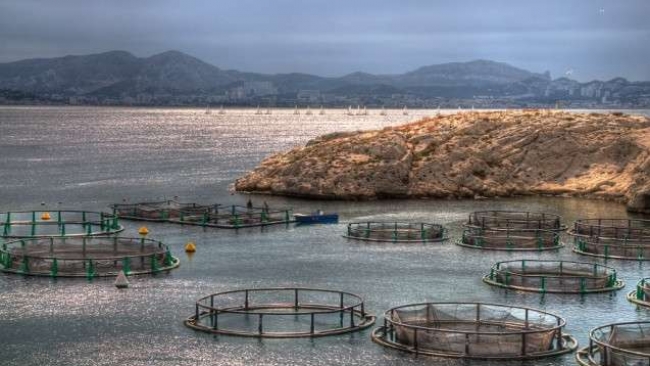Making fish farming more sustainable

The American Heart Association recommends that we eat fish at least twice a week, since fish are high in protein, low in saturated fats and rich in omega-3 fatty acids. Global per capita fish consumption has almost doubled from the 1960s to 2012. And today, about half of all the seafood destined for human consumption is produced through fish farming, also called aquaculture.
The Food and Agriculture Organization of the U.N. (FAO) projects that by 2030, aquaculture, one of the fastest growing methods of producing food in the world, will be responsible for almost two-thirds of the fish we eat.
The most common type of aquaculture is farming in net pens or cages anchored to the sea floor in the ocean near the coast. There are also closed systems of tanks or ponds that float on water or operate on land. The FAO estimates that over 600 aquatic species are produced globally in a variety of aquaculture systems using freshwater, brackish water or salt water.
In the U.S., over 91 percent of the seafood we eat is imported. China is the largest exporter of fish globally, the third largest importer of fish and the biggest aquaculture producer. As early as 2500 B.C., the Chinese practiced fish farming, putting carp in rice paddies where they ate insects and weeds, fertilized the rice, and then were eaten. Today, 88 percent of the world's aquaculture comes from Asia.
While fish are known for their omega-3 fatty acid benefits, they do not actually produce omega-3s themselves. Microscopic algae that live in fresh or salt water or sediments produce them. Herbivorous fish and forage fish like sardines, anchovies and herring obtain omega-3s by eating the microalgae. Larger carnivorous fish such as salmon or sea bass then eat the forage fish. Because salmon and other popular carnivorous fish need omega-3s to grow, 30 to 50 percent of the fish feed traditionally used for these species consists of fishmeal (ground fish) and fish oil. Over 50 percent of the world's fish oil is used in feed for farmed salmon.
This is one reason that aquaculture has a reputation as being unsustainable. In 1997, it took almost 3 tons of forage fish to produce one ton of salmon. A third of the global fish harvest still goes toward making fish meal and fish oil. As a result, forage fish are being overfished, and some populations have crashed, which has implications for the entire food web since larger fish depend on them for food.
Source: Phys.org
Fri 15 Apr 2016 at 10:20
.jpg)
.jpg)

.jpg)
.jpg)
.jpg)